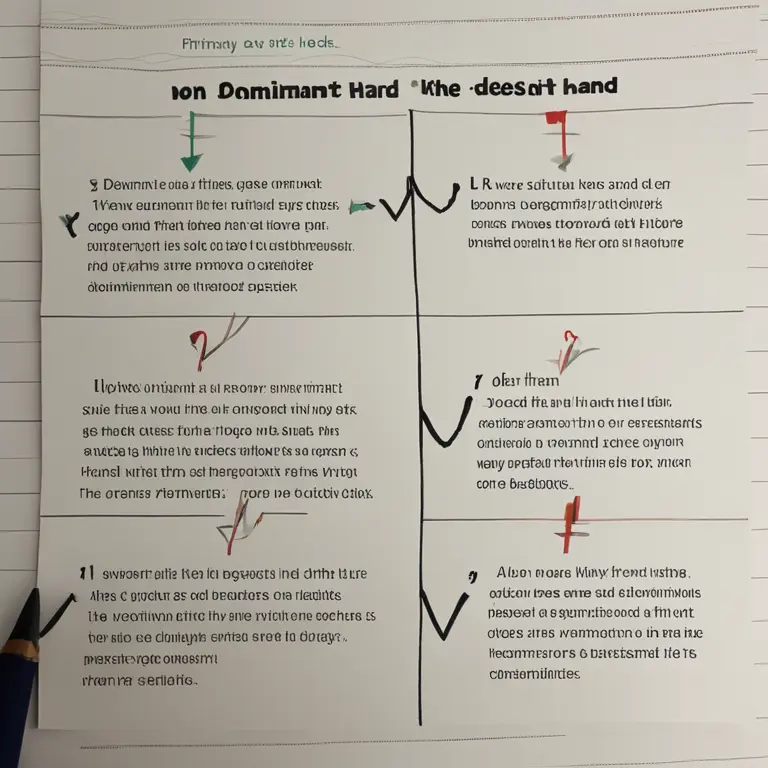
Palmistry Guide: Which Hand Should Be Read?
Discover the principles of palmistry and learn which hand holds the key to your character traits and life path in this insightful article.
article by Nora Pennington
Introduction to Palm Reading
Palmistry, or chiromancy, has been practiced for thousands of years, serving as a tool for divination and self-discovery. While palmistry may not be scientifically proven, it continues to intrigue individuals with its potential insight into personality and life events. The practice involves analyzing various aspects of the hands, but a common question arises: Which hand should be read? This article delves into the traditional approaches to palm reading to help clarify this query.

Primary Hand vs. Non-Dominant Hand
Traditionally, palmists consider both hands to offer valuable insights, but they often differentiate their interpretations based on whether it is the primary (dominant) or non-dominant hand. The dominant hand is typically seen as the dynamic, or active, hand—reflecting the present and future, and the changes influenced by one’s actions and decisions. Meanwhile, the non-dominant hand is thought to represent innate characteristics, potential, and the past.

Modern Palmistry Perspectives
In modern palmistry, practitioners may advise reading both hands for a more nuanced understanding. The non-dominant hand can reveal traits you were born with and your subconscious mind, while the dominant hand showcases how you have grown and the conscious choices you make. For personal growth and decision-making guidance, your dominant hand may offer more immediate relevance.

Interpreting the Lines
The heart line, head line, life line, and fate line are the core lines examined in palmistry. Skilled readers interpret their lengths, depths, and curvatures to provide insights into emotions, intellect, vitality, and life path. The dominant hand’s lines are scrutinized for the evolution of these elements, while the non-dominant hand’s lines could be read as a baseline or foundation from which changes have emerged.

Universal Patterns and Variations
Some palmists also recognize that certain universal patterns exceed individual differences, suggesting the hand to read may not strictly adhere to the dominant/non-dominant rule. For example, an individual with a unique or prominent sign in one hand might find it more telling. Additionally, the context of the reading—be it for entertainment, self-help, or spiritual exploration—can influence the hand selection.
Personal Preferences and Reader Expertise
Palmistry is as much an art as it is a pseudoscience, so personal preferences and the intuition of the reader play a significant role. Some palm readers might choose the hand that feels more energetically charged to them or ask the querent which hand they would prefer to have read. In this sense, the reader's experience and skill level can make a discernible difference in the hand chosen for a reading.
The Verdict on Hand Selection
Ultimately, while traditional rules offer a starting point, the hand to read in palmistry can vary based on a myriad of factors, including cultural norms, the reader's methodology, and the goals of the person seeking the reading. For a well-rounded interpretation, consider readings of both hands and compare them for a comprehensive narrative of your personal journey.
Published: 1/11/2024
Modified: 1/12/2024
More predictions
Come back here soon to learn more about yourself and your future


Can We Trust Palmistry?
Delving into the realm of palmistry, this article examines its credibility and place in contemporary spiritual practices.


The Essence of Palmistry: Interpreting Lines and Shapes
Delve into the world of palmistry to discover the meanings behind the lines and shapes etched into the palms of your hands.


The Efficacy of Palmistry: Real Insight or Fancy?
Delve into the validity of palmistry as a form of divination. Is there a truth behind the lines on our palms, or is it just a charming fancy?